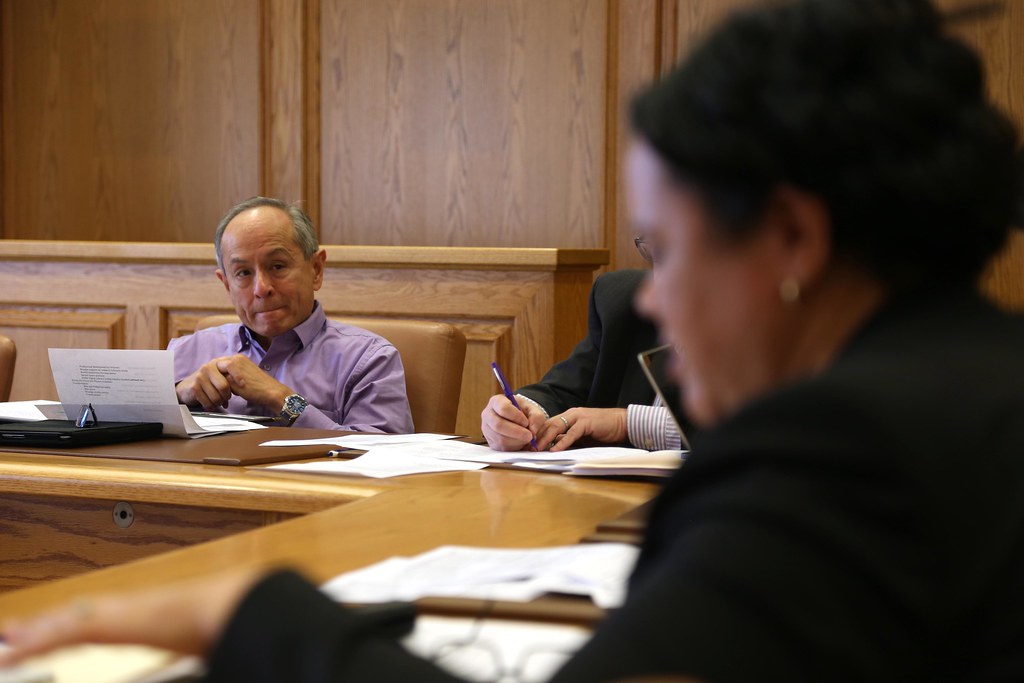[set_id=72157641340168013]
SF State could soon tighten the entrance guidelines that give Bay Area students priority admission, while also holding students outside that area to higher admission standards.
Members of the Strategic Planning Coordination Committee, a group headed by SF State President Leslie E. Wong which focuses on improving the campus, met Friday Feb. 21. One of the issues brought up at the meeting was student admissions.
SF State’s local area encompasses a nine-county region according to Committee Member Eric Hsu, a mathematics professor, who said the campus acts as a “service entity” to these counties.
However, according to Hsu, higher standards could make the University more of a destination campus for prospective students outside that area.
“We could cultivate that standard and make it even higher,” said Hsu. “The harder you make it to get in, the greater the likelihood that people will see the campus as truly excellent.”
SF State’s local area is made up from the nine Bay Area counties including Alameda, Contra Costa, Marin, San Francisco, San Mateo, Santa Clara, Napa, Sonoma and Solano counties.
But at the meeting, members discussed reducing the size of the University’s service area to give priority to only six counties.
The committee also discussed holding applicants to a higher academic standard if they are from outside the service area. Although this is already the case, the committee felt that the current standard could be raised even higher.
“I like the idea of keeping access to the local community,” said committee member Dawn-Elissa Fischer, assistant professor of Africana studies.
Committee members often referred to the model that San Diego State uses as an example.
In the 1980s students from San Diego’s local service area could gain admission with a 2.0 high school GPA. But the school raised the average admission GPA to 3.8 for applicants outside the area, according Linda Oubre, College of Business dean.
“What if we do this 3.8 (minimum GPA) if you’re from Southern California,” said committee member Erik Rosegard, an associate professor of recreation, parks and tourism. “Would we see the local grad rate dropping if there’s this disparity?”

Currently SF State accepts every student who meets the minimum eligibility requirements from San Francisco Unified School District. “Everybody locally gets in,” according to President Wong.
SF State is very attractive to students from the Los Angeles and San Diego areas, according to Wong. About 38 percent of the first-year class is from San Diego alone.
As of now, Wong stated these plans are “just an idea about who we are and those we serve.”
Wong’s Strategic Plan works by dividing campus issues into seven areas, or “themes”, which are then assigned to their own board in order to create an improvement plan for the next three to five years.
At the meeting, the committee also focused on the fifth and sixth of the seven different “themes” that make up the Strategic Plan. These are “Advancing Campus and Community Climate” and “Elevating Institutional Support.”
The leaders who discussed theme five focused primarily on building campus morale, which entails finding a location for a faculty and staff University Club (U-Club) as well as community local school outreach programs.
The leaders of theme six discussed fundraising through a “Culture of Philanthropy” in what the committee refers to as part of their comprehensive campaign.
“We’re at a crossroads where we could take a risk,” said University Budget Officer Franz Lozano. “At some point the vision has to be there. But hopefully you find a balance. San Diego took a risk, but look at the great things that happened.”
The next strategic plan meeting will be held March 7.





